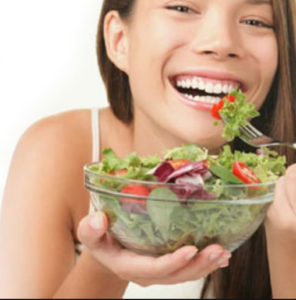
Hello BC Students and Fellow Eaters of Food…
Fall Quarter is drawing to a close and winter break is nearly upon us, bringing with it late mornings, shameless wearing of onesie PJ’s, and time to spend puttering around the kitchen attempting…what? Maybe you have some ideas already…scratch-made cookies, or a family recipe or two from long, long ago and far, far away.
But let us consider sustainability for a moment. What is the environmental impact of the foods we choose? What are the economic impacts on us and others? Finally, what’s the effect on us, on our health and wellbeing?
If we were to make a meal that satisfactorily answered all of these questions, what would it look like? There’s no right answer, of course – in our society today you’d probably need to follow your food’s journey from seed to table to ensure its legitimate “sustainability,” but that doesn’t stop us from exploring a few ideas here and now.
- The Environmental Aspect:
There’s no question that eliminating all traces of animals from our plates will lessen our carbon footprint. ( http://www.worldwatch.org/node/6297 ) For this example meal, we’re going veg-only. Don’t worry…I’m not suggesting you raid your neighbor’s Yard Waste bin for twigs. There’s far better options out there, like millet. Although in America we mostly give millet to our pet birds –

– in Africa and Asia it is a staple food source, and has been for thousands of years. Millet varieties are very hardy cereal crops with a short growing season; their ability to handle drought and high temperatures makes them perfect candidates to grow in less fertile, more drought-ridden soils in East Africa and near the Sahara Desert. (They also require less water to grow than rice, wheat, or corn.) In India, the production of millets are high, however the amount of millet used as a food source has decreased dramatically in the last fifteen years, with most of the millet now used as animal fodder, or for the production of alcohol. ( http://ejournal.icrisat.org/Volume8/IMPI/Availability_and_utilization.pdf ) Which is kind of a shame because millet, as foods go, is a very healthful one to eat.
- The Health Aspect:
![]()
 *Note that this table refers to millet in its raw, uncooked form – which isn’t the best way to eat it. The nutrient levels will change according to your chosen cooking method.
*Note that this table refers to millet in its raw, uncooked form – which isn’t the best way to eat it. The nutrient levels will change according to your chosen cooking method.
Video about how to prepare millet, here: https://www.youtube.com/watch?v=6xYg0YdK7HA
Millet has been eaten around the world for centuries. In Russia, a popular millet porridge is made by adding milk and sugar at the end of the cooking time, or it is eaten savory alongside different stews. The Germans add apples to the cooking water, and drizzle honey over the porridge as it cools. The Chinese pair it frequently with yams, beans, and various squashes – which happens to be the way I eat it most often, with steamed butternut squash and greens of some sort, like kale, or broccoli, or cabbage…or…
Here’s a list:
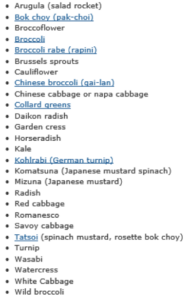
All of these foods belong to the Brassica plant family, which have some really good health properties that you can learn more about here: http://healwithfood.org/list/healthiest-brassica-vegetables-benefits.php
For this recipe, I’m going to focus on two of my favorite members of this family:


- The Economic Impact:
As a college student, I’m very conscious about where my money goes in regard to food; I don’t have a lot of it to spend, and I want to get the most value – that is to say, the best quality of nutrients – from what I buy. Also, I want my money to reach all the way down the supply chain and go right back into the hands of the farmer who grew my food, whenever possible. This is easier said than done. I don’t know who grew the millet I bought, or where, or how long ago it was grown. However, we happen to live in an area where farmers’ markets are abundant, and local cooperatives like PCC are accessible and affordable some of the time, if you buy the right things.
For this meal I shopped at PCC for millet, purple cabbage, and a turnip. (I already had arugula from Trader Joe’s.) Millet is pretty inexpensive wherever you purchase it (I paid $1.19/lb), so I figured the best place to buy it was from PCC, where I have more confidence in the care they take in ensuring a responsible supply chain for sourcing products like millet that are not locally produced.
I paid a bit more for my purple cabbage and turnip than I would have had I gone to a cheaper store, but in return for the extra few cents that I spent, I had: good quality, locally grown vegetables; more knowledge and confidence in the growing methods used; trust that the farmer would be fairly paid; and the knowledge that whatever profit PCC made would be used with honesty, fairness, and responsibility.
For a cabbage – a vegetable that is currently in-season and available as locally as, theoretically speaking, your own backyard garden – this was worth the trade-off. For out-of-season fruit and veg that’s been grown organically somewhere local-ish and costs an arm and a leg…This is the point at which I go to a different, cheaper store, and begin sizing up produce according to potential nutrient va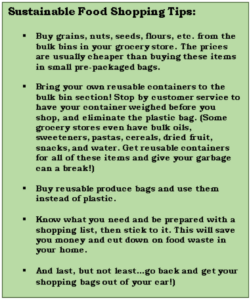 lue and cost to me, the broke and hungry consumer.
lue and cost to me, the broke and hungry consumer.
VIDEO: Philosopher Peter Singer on Buying Locally (start at 3:36): https://www.youtube.com/watch?v=Uzq0H9vwE5Q
If you’re really interested in this, check out this review of Singer and Mason’s book: “The Ethics of What We Eat,” here: http://www.theage.com.au/news/book-reviews/the-ethics-of-what-we-eat/2006/05/26/1148524874515.html?page=3
- The Meal:
I’m starting with a bowl of millet dressed with olive oil and salt, thinly sliced purple cabbage, and cubed turnip.
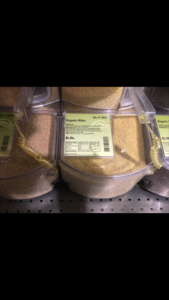
I steamed the cabbage in ¼ inch of water, just until it was cooked through, and then repeated the process with the turnip. (If you keep a little of the cabbage cooking water in the pan, you’ll end up with colorful turnip cubes like this…)
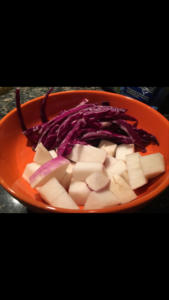
To finish, I simply piled on the arugula, cabbage, and turnip, and then squeezed half a lemon over the finished dish. (When any type of acid interacts with the purple cabbage, it changes the color to something like this…)
FIN. Time to eat!
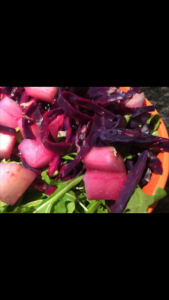
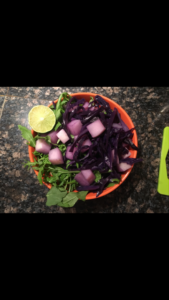
Nutritional breakdown of this meal (I used www.Cronometer.com )
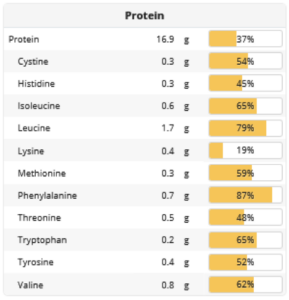
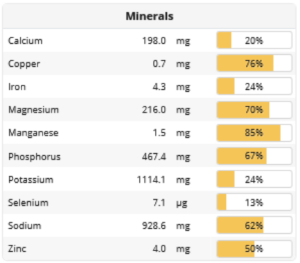

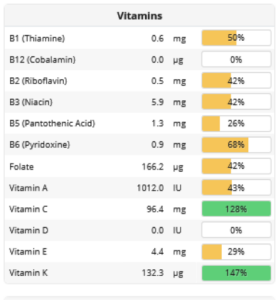
Last Updated December 6, 2016
